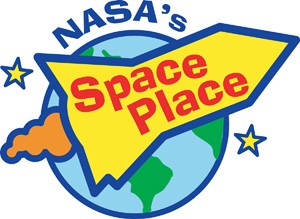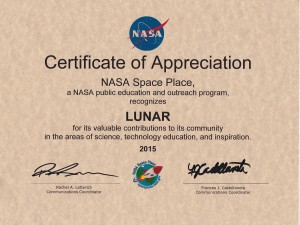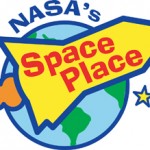Imagine a world very different from our own: permanently shrouded in clouds, where the sky was never seen. Never had anyone see the Sun, the Moon, the stars or planets, until one night, a single bright object shone through. Imagine that you saw not only a bright point of light against a dark backdrop of sky, but that you could see a banded structure, a ringed system around it and perhaps even a bright satellite: a moon. That’s the magnitude of what LIGO (the Laser Interferometer Gravitational-wave Observatory) saw, when it directly detected gravitational waves for the first time.
Author Archives: William Orvis
NASA Certificate of Appreciation
The Closest New Stars To Earth
When you think about the new stars forming in the Milky Way, you probably think of the giant star-forming regions like the Orion Nebula, containing thousands of new stars with light so bright it’s visible to the naked eye. At over 400 parsecs (1,300 light years) distant, it’s one of the most spectacular sights in the night sky, and the vast majority of the light from galaxies originates from nebulae like this one. But its great luminosity and relative proximity makes it easy to overlook the fact that there are a slew of much closer star-forming regions than the Orion Nebula; they’re just much, much fainter.
The Loneliest Galaxy In The Universe
Our greatest, largest-scale surveys of the universe have given us an unprecedented view of cosmic structure extending for tens of billions of light years. With the combined effects of normal matter, dark matter, dark energy, neutrinos and radiation all affecting how matter clumps, collapses and separates over time, the great cosmic web we see is in tremendous agreement with our best theories: the Big Bang and General Relativity. Yet this understanding was only possible because of the pioneering work of Edwin Hubble, who identified a large number of galaxies outside of our own, correctly measured their distance (following the work of Vesto Slipher’s work measuring their redshifts), and discovered the expanding universe.
How will we finally image the event horizon of a black hole?
One hundred years ago, Albert Einstein first put forth his theory of General Relativity, which laid out the relationship between spacetime and the matter and energy present within it. While it successfully recovered Newtonian gravity and predicted the additional precession of Mercury’s orbit, the only exact solution that Einstein himself discovered was the trivial one: that for completely empty space. Less than two months after releasing his theory, however, the German scientist Karl Schwarzschild provided a true exact solution, that of a massive, infinitely dense object, a black hole.
How we know Mars has liquid water on its surface
Of all the planets in the solar system other than our own, Mars is the one place with the most Earth-like past. Geological features on the surface such as dried up riverbeds, sedimentary patterns, mineral spherules nicknamed “blueberries,” and evidence of liquid-based erosion all tell the same story: that of a wet, watery past. But although we’ve found plenty of evidence for molecular water on Mars in the solid (ice) and gaseous (vapor) states, including in icecaps, clouds and subsurface ices exposed (and sublimated) by digging, that in no way meant there’d be water in its liquid phase today.



